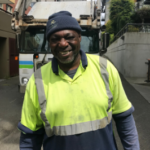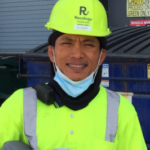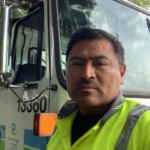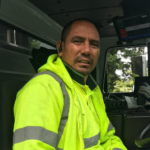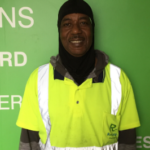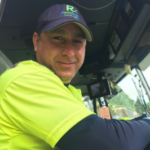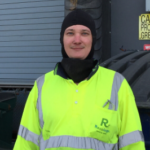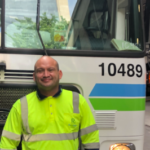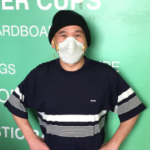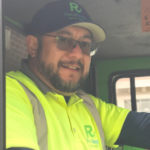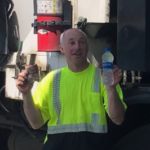Sign up for our monthly newsletter for tips to use resources wisely, generate waste only as necessary, and make simple changes that benefit our communities and the environment.
Read Our Latest Features:
A Guide to Less Plastic in 2021
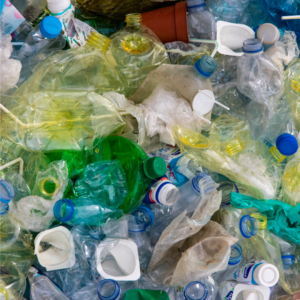 Think about how many times you touch plastic throughout your day…your phone, remote control, a pen, soap dispenser, hand sanitizer bottle. Plastics have become an integral part of our lives and sometimes it can be hard to imagine life without this material. However, there are small lifestyle changes you can make in our own households to transition easily and rely less on plastic products that you commonly use.
Think about how many times you touch plastic throughout your day…your phone, remote control, a pen, soap dispenser, hand sanitizer bottle. Plastics have become an integral part of our lives and sometimes it can be hard to imagine life without this material. However, there are small lifestyle changes you can make in our own households to transition easily and rely less on plastic products that you commonly use.
|
read more
Focus in the areas in your household that accumulate the most plastic products as a starting point: The kitchen, closet, and bathrooms.
Kitchen
Closet
Many clothing pieces are made with plastic materials such as polyester, acrylic or nylon. These plastic fibers break down while in the wash and turn into microplastics. Due to its small size, microplastics can lead into our waterways which can affect our own drinking water and animals in our ecosystem.
Bathroom
We hope that these tips help you in the new year to reduce the daily plastics you use. For any questions, please e-mail us at educationoutreach@recology.com or visit our website, Recology.com |
Recycling Right is Critical Amid the Coronavirus Pandemic
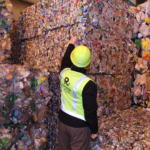 King County is fortunate to have robust recycling programs that continue to thrive, but in other areas across the U.S. recycling programs have been suspended or cut due to existing and new challenges associated with the spread of coronavirus. And yet, curbside recycling programs play a key role in the global manufacturing supply chain now perhaps more than ever…
King County is fortunate to have robust recycling programs that continue to thrive, but in other areas across the U.S. recycling programs have been suspended or cut due to existing and new challenges associated with the spread of coronavirus. And yet, curbside recycling programs play a key role in the global manufacturing supply chain now perhaps more than ever…
|
read more
“Recycled materials serve as feedstocks necessary to produce essential supplies including those especially needed during this time such as paper towels, sanitizing wipes, toilet paper, and packaging for a wide range of products including boxes for shipping,” says the EPA, and “Many businesses that would normally generate large amounts of recyclables have limited operations now. Therefore, household recycling is vital to the continued supply of raw materials for U.S. manufacturing sectors.”
Indeed, recycled cardboard delivers more than just Amazon orders to our homes and is essential to keep grocery and healthcare items in stock. And recycled glass will likely play a critical role as the global supply chain prepares “to make enough small glass vials to deliver [a] coronavirus vaccine around the world.” (Washington Post)
However, recycling correctly is key to ensuring that these essential materials are effectively recycled. Items that don’t belong in the recycling, or materials that are improperly prepared, contaminate the supply and can result in loads of otherwise recyclable material being sent to the landfill.
To help do your part, please follow these tips to recycle right:
1. When in doubt, find out (what’s accepted in your recycling cart)!
In King County, accepted items include paper and cardboard, plastic bottles, tubs and jugs (no plastic film or bags), glass bottles and jars, and metal and aluminum cans. If something doesn’t fall into one of these categories or you’re just not sure, check Recology.com or give us a call.
Confused by the chasing arrow symbol found on the bottom of most plastic items? You’re not alone. This symbol indicates the type of plastic that an item is made out of but is NOT a reliable indicator of local recyclability. Though products stamped with this symbol may be made from plastic, your local recycling facility may not be able to sort them and there may not be market demand for these materials. For example, Amazon bubble mailers are stamped with the recycling symbol, but need to be taken to a designated drop-off location in order to be properly disposed. Similarly, many plastic utensils are stamped with the recycling symbol but can’t be properly sorted at a recycling facility because of their size.
For a reminder of which items can be recycled locally, input your zip code on Recology.com find our Sorting Guides in the Helpful Resources section. You can print these out and place a copy by your recycling receptacle so you’re never in doubt when you throw something out.
2. No mixed materials.
Though you can recycle both plastic and metal, products made of both materials can’t be recycled and don’t belong in your recycling cart. Examples include metal coffee cans with plastic lids, and the Pringles can with its metal base, plastic cap, and foil-lined cardboard sleeve. If you can easily separate the materials – remove the plastic lid from the metal coffee can – you can confidently toss these materials into your recycling cart, but if you can’t, the item should be placed in the garbage instead.
3. Don’t Wishcycle!
While we want to minimize what we landfill as much as possible, placing questionable items in the recycling cart in the hopes that they may be recycled or reused isn’t a good idea. This practice is referred to as “wishcycling” and causes much more harm than good. Items like textiles get jammed the machinery at recycling facilities and material that doesn’t meet specific requirements will simply be sent to the landfill. Stick to the list of materials cited above and when in doubt, check it out – call or email Recology – or throw it out.
4. No plastic bags or film!
Plastic bags do not belong in your curbside recycling cart, nor does any kind of film plastic – bread bags, paper towels and toilet paper wrap , and the ubiquitous bubble wrap.
Though these items are made from plastic they wreak havoc at recycling facilities, wrapping around the gears of the sorting machinery and reducing the facility’s ability to effectively sort out recyclable materials. To address these issues and make recycling more efficient, King County officially discontinued accepting plastic bags in curbside recycling programs in in January 2020.
Alternately, depending on where you live, you may have access to drop-off recycling options for plastic film and wrap. Visit plasticfilmrecycling.org to find out if there is a drop-off location near you. If none are available, please toss these items in the garbage.
5. Only recycle items that are empty, clean and dry.
In order to be recycled, items must be empty, clean and dry. A few drops of liquid aren’t problematic, but more will cause paper and cardboard to mold and render it unfit for recycling. And food on any type of packaging has the opportunity to rot and mold as it journeys from your cart to the recycling facility and onto its final destination. Materials may take long journeys in shipping containers and vendors will reject materials that smell like rotten food and send them back to the landfill.
Remember the motto, “Empty, Clean and Dry!” Before you toss containers into your recycling cart, EMPTY any food or liquid, CLEAN with a quick rinse or scrape, and tap DRY to shake out excess liquid.
6. Compost your pizza box, paper towels and paper napkins.
Because recyclables need to be empty, clean and dry, soiled items like pizza boxes and paper towels shouldn’t be recycled. Instead place food-soiled paper into your compost cart.
7. Place items loose in your recycling cart.
Starting early this year, King County no longer allows plastic bags or plastic wrap in curbside recycling carts. Please make sure you properly place EMPTY, CLEAN & DRY recyclables loose in your recycling cart. There is no need for a plastic liner. When you don’t bag your recycling, you help recycling facilities operate more efficiently and safely.
8. Break down cardboard.
Be sure to break down cardboard boxes before setting out for recycling. Doing so creates more room in your cart for other recyclables and helps recycling drivers move more efficiently through your neighborhood on collection day
9. Dispose of special-item recyclables correctly.
Special recycling programs exist for items like batteries, CFL lightbulbs, Styrofoam, and more, but these items can’t be placed in curbside recycling carts. Batteries and lightbulbs are a safety hazard in trucks and at recycling facilities and can cause fires or mercury exposure, while Styrofoam breaks into to tiny particles when compacted in a recycling truck.
Thankfully numerous drop-off locations exist where you can safely and efficiently dispose of these materials. Recology also offers curbside pickup for many of these items. Visit Recolgoy.com and input your location to schedule a pickup.
10. Reduce what you can.
The most effective way to properly dispose of materials is to avoid doing so, by keeping them out of your home in the first place. Start with a simple step like reducing your junk mail. According to Ecocycle, you could spend up to eight months of your life dealing with junk mail. Save yourself some time and sanity, save the trees that are critical to help combat climate change, and save the mailman an unnecessary trip to your home. We’re all in this together and our individual actions make a difference.
|
Five Easy Ways to Use Less Plastic at Home
 Are you joining the millions who are reducing their plastic use for Plastic Free July? We’ve got some easy (we promise!) ways you can reduce your plastic consumption at home…
Are you joining the millions who are reducing their plastic use for Plastic Free July? We’ve got some easy (we promise!) ways you can reduce your plastic consumption at home…
|
read more
Bar and liquid soap both clean effectively, but bar soap creates less environmental impact. According to the Sierra Club, the carbon footprint for liquid soap is “at least 25 percent bigger than that of bars”. Not only are the plastic soap bottles and pumps made from plastic (which requires petroleum or natural gas for production), those pumps cause us to use more soap than we need. McGill University notes that “On average, people use about 2.3 grams of liquid soap to wash their hands but only about 0.35 grams of a bar soap” and that “it costs about ten times as much to wash your hands with liquid soap than bar soap.” Bar soap alternatives are available for shampoo, conditioner, face wash, and shaving products too!
Frozen vegetables are healthy and convenient, but the plastic bags we buy and often cook in them aren’t recyclable. Instead take advantage of your local farmers market and your freezer to create DIY convenience foods. Buy extra veggies, chop, season, and stash in your freezer in reusable containers (glass mason jars or reusable silicone bags are great options!) for quick use when you need them. And double up on your favorite recipe and freeze a portion for a fast, future meal.
Most common store-bought cleaning products come in plastic containers and some include harmful chemicals. According to the American Lung Association, “even products advertised as “green” or “natural” may contain ingredients that can cause health problems”. An easy way to avoid both is to clean with natural ingredients you already have in your kitchen. Give these DIY cleaning solutions a try.
According to the National Ocean Service, “microplastics are small plastic pieces less than five millimeters long which can be harmful to our ocean and aquatic life.” And though some are created from larger plastic debris that degrades into smaller and smaller pieces, some are added to the beauty products that line our bathroom shelves – like face wash, body wash, and even toothpaste. Typically, microplastics are added to products to help exfoliate our skin or are used to enhance the appearance of the product. Because plastic particles never truly break down, these microplastics end up in our waterways and oceans. After these tiny beads are washed off your face and body, they flow down the drain. And because they are so small, they can’t be filtered out of the water at the wastewater treatment plant. Once these microplastics end up in our waterways, they are often mistaken for food by sea life, and they have harmful effects on the nervous systems and digestive tracks of many sea creates. The Environmental Working Group has a great resource you can use to make sure you’re using beauty products that don’t contain microplastics.
If you’re hosting a get-together, use reusable plates and silverware whenever possible. If you find that you absolutely need single use items, opt for compostable alternatives. Eco-Products and Cedar Grove provide a myriad of options in hot and cold cups, paper or clear plastic containers, plates, bowls, and utensils. Don’t forget to place these in your compost cart! |
Let’s Celebrate Waste & Recycling Workers
 Here at Recology we are incredibly thankful for the support we’ve received recently for our essential workforce, and we look forward to celebrating Waste & Recycling Workers Week with you June 14-20! We asked some of our drivers and Material Recovery Facility (MRF) workers to share what they enjoy about their jobs, what they do in their free time, and what they’ve learned about recycling since joining Recology. Check out their responses below. …
Here at Recology we are incredibly thankful for the support we’ve received recently for our essential workforce, and we look forward to celebrating Waste & Recycling Workers Week with you June 14-20! We asked some of our drivers and Material Recovery Facility (MRF) workers to share what they enjoy about their jobs, what they do in their free time, and what they’ve learned about recycling since joining Recology. Check out their responses below. …
Green Spring Cleaning Tips
As we we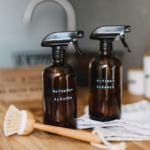 lcome the warmer spring weather and continue to practice social distancing, many of us are looking to create more space and order in our homes. To assist in this effort, we have compiled a few environmentally-friendly tips to help you engage in spring cleaning this year …
lcome the warmer spring weather and continue to practice social distancing, many of us are looking to create more space and order in our homes. To assist in this effort, we have compiled a few environmentally-friendly tips to help you engage in spring cleaning this year …
|
read more
Use What You HaveMake use of old or unwanted clothes as cleaning rags, and completely skip spray bottles. Reused squirt bottles (like old ketchup or mustard bottles) do a great job distributing bulk cleaning solution on surfaces instead of in the air. Repurpose What You Would Have DonatedDecluttering is a mainstay of spring cleaning. And yet many donation centers remain closed and we’re asking that you hold onto bulky items to reduce our drivers’ potential exposure to the coronavirus. So what to do with the items you’re looking to part with? Consider if they have another use in your home. Try this list of handy helpers, or this list of opportunities to transformation old furniture into kid toys and toy storage. Or check out the recycled garden ideas we found on not one, but two lists! (Ideas for DIY storage solutions that can be made from things like cereal boxes are plentiful and can double as fun kid activities. Give yourself a break while your kids decorate that cardboard box with paint or wrapping paper to store all those action figures!) Sell or Gift What You Don’t NeedWhat you can’t repurpose, you might be able to sell on Craigslist or Facebook, or offer for free in your local BuyNothing Group. If you have books, personal care items, or non-perishable foods that you want to donate, you can place those items in a local little free pantry or library. Reduce What’s Coming InOne of the most effective ways to keep your home organized is to stop the influx of items coming into your home. Before your next purchase, ask these ten questions to determine if you really need to bring yet another item into your home. If you do decide you’re in need of a new item, check out Craigslist, Facebook Marketplace or your local BuyNothing Group to shop without packaging and often at huge discounts. If you choose to order an item online, ask if it can be sent with minimal packaging. And the next time you order takeout, kindly ask if the establishment can leave out the little extras – like paper napkins, plastic silverware, and single use packages of salsa or soy sauce – that you simply don’t need. Your future self will be grateful when you don’t have to toss them in the trash or in the junk drawer you clean out next year. |
Easy Backyard Compost
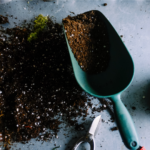 Don’t waste your yard’s spring bounty, compost it. As you enjoy the growth in your yard this spring, consider that yard trimmings can be put back into your garden to make it even more vibrant. Spring is a great time to begin a compost pile that will yield fast results and help increase soil water retention during our drier summer months…
Don’t waste your yard’s spring bounty, compost it. As you enjoy the growth in your yard this spring, consider that yard trimmings can be put back into your garden to make it even more vibrant. Spring is a great time to begin a compost pile that will yield fast results and help increase soil water retention during our drier summer months…
|
read more
1. Find Your Ideal Spot Select a dry shady area that is away from your house but close enough for your garden hose to reach. Though you can buy a simple bin or tumbler that makes turning your compost a breeze, you can also compost directly on the ground. Some recommend adding a base layer of mulch, woody or bushy material, to promote aeration, but that’s optional. 2. Build Your Pile Alternate layers of brown (carbon) and green (nitrogen) material and aim for a 4:1 ratio of browns to greens. Browns include dry leaves, sawdust or small wood chips, and shredded newspaper or cardboard. Greens include grass clippings, food waste, and garden waste like weeds or green trimmings. Aim for layers that are a few inches deep and use your garden hose to moisten the material as you build. Make sure any food scraps are covered with a layer of brown materials to prevent flies and smells. 3. Mix Often and Keep It Moist The more often you mix or turn your pile, the faster it will decompose. You can use a shovel or a rake to mix. Be sure to mix the pile thoroughly at a minimum of once every two weeks. And use your garden hose to add moisture if you notice your pile is dry. It should be damp like a wrung out sponge. 4. Cover to Retain Heat, Moisture, and Nutrients Cover your pile with a tarp or an old scrap of carpet. This will trap the heat and aid your compost in cooking. It will also prevent nutrient loss in case it rains. While rain is a welcome sight for your plants, it will wash the nutrients out of your compost and deposit them into the ground below. 5. Optional: Accelerate the Breakdown If you want your compost to be viable by the beginning of summer, you can add a compost accelerator to speed up the breakdown process. It’s a simple solution of sugar water, ammonia, and beer – which is why some refer to this method as “drunk composting”. A Word on Food Waste and Avoiding Pests and Smells Many avoid building a compost pile for fear of attracting pests or foul smells, but both can be avoided if you follow the instructions above and be sure to leave out any meat, grease, or dairy products. You can even leave out food scrapes entirely out of the mix. Put those in your food and yard waste cart instead. Also, be sure to turn your pile often and keeping it moist to deter pests and keep smells at bay. If rodents or other animals are a high concern, consider using a compost bin or tumbler. |
50 Ways to Celebrate Earth Day
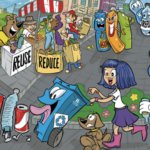 April 22 is the 50th anniversary of Earth Day! While you might not be able to attend a community event to celebrate your commitment to protect the environment this year, there are still numerous ways to honor and help preserve the incredible habitat that we call home. Here are 50 ways you can celebrate while maintaining social distance and staying close to home…
April 22 is the 50th anniversary of Earth Day! While you might not be able to attend a community event to celebrate your commitment to protect the environment this year, there are still numerous ways to honor and help preserve the incredible habitat that we call home. Here are 50 ways you can celebrate while maintaining social distance and staying close to home…
|
read more
Learn (or Teach) Something New!
1. Teach kids about recycling & composting using the Recology Coloring Book! 2. Learn about a new environmental problem or issue and teach someone else about it. Some ideas: climate change, species extinction, deforestation. 3. Calculate your carbon footprint and brainstorm ways to reduce it. 4. Calculate the carbon footprint of the meals you eat in a single day. 5. Watch The Story of Plastic. It’s making its national debut on April 22 on the Discovery Channel. 6. Have an Environmental Documentary Movie Night or Week. We recommend any of these eye-opening films: A Plastic Ocean (Netflix, Amazon Prime), Before the Flood (Amazon Prime, Disney Plus, YouTube, iTunes), An Inconvenient Sequel: Truth to Power (Amazon Prime, YouTube, Google Play, iTunes), Ice on Fire (HBO, Hulu), or Plastic China (Amazon Prime, Google Play, Vimeo On Demand) 7. Subscribe to an environmental podcast. Some suggestions: NPR: Environment, Practical(ly) Zero Waste, How to Save the World 8. (Virtually) Interview a senior citizen. Utilize virtual communication like Zoom or FaceTime to connect and ask about the changes they’ve seen in the environment and our waste over the course of their life. Questions like: How did you grocery shop without plastic bags? What did you use instead of paper napkins and paper towels? What effects of pollution have you seen over the years? What are some patterns of consumption you’ve seen change over the years? 9. Give a lesson in laundry and water conservation. 10. Read up on local environmental legislation. 11. Reach out to your local government representatives about environmental issues and policies you care about. 12. Make a micro-composter. With little more than a soda bottle, you can make an indoor composter that will allow your kids to witness the decomposition process. Find New Ways to Reduce13. Unplug for the day. Go electricity 1free for a full day. Turn off all your lights and electronic gadgets and used candles or torches for the night. (Check out these fun flashlight games you can play with your family for entertainment.) 14. Stop junk mail. 15. Go paperless. If you receive paper bills or invoices, go paperless. 16. Switch to energy saving bulbs. Replace all standard incandescent light bulbs in your house with energy-efficient bulbs. 17. Repair something you planned to toss and replace. 18. Reduce your water consumption. 19. Have a Zero Waste Day. See if you can go without creating any waste in your home! 20. Go on a litter neighborhood scavenger hunt. Pick up garbage (using proper protective gear) in your neighborhood and use the hashtag #bagyourblock to share your results. 21. Hold a Waste Competition. Challenge your family or neighbors and see who can create the least amount of waste for the week. 22. Take a pledge! Assess your own waste habits and make a public commitment to make a change. Go plastic free for a week, go meatless on Mondays or commit to bringing a reusable water bottle with you wherever you go. Tend to Your Home & Garden23. Start a compost pile in your yard. 24. Plant an herb garden, outdoors or in. 26. Plant a pollinator garden. 27. Start saving rainwater. Use a barrel to collect rainwater that you can reuse to water your garden or indoor plants. 28. Build a birdhouse out of wood or an empty milk carton. 29. Have a family dinner focused on locally-sourced, sustainable foods. 30. Commit to go meatless on Monday (or any other day of the week). 31. Do some natural Spring Cleaning. Use one of these easy recipes for a natural all-purpose cleaner. 32. Plant a tree. Get Crafty33. Make or decorate a reusable shopping bag. 34. Make your own art supplies. 35. Learn to sew and make basic repairs to your clothing. 36. Enlist your kids to design helpful reminder signs in your home to do things like turn out the lights, unplug power strips, and use less water. 37. Make flowers from old egg cartons. 38. Make cars from toilet paper rolls. 39. Make sock puppets from socks you would have discarded. 40. Brew your own bubbles and make your own wands or bubble blowers from recycled materials. Enjoy the Outdoors41. Explore your neighborhood by taking a urban hike or nature walk to admire the local sights and sounds. 42. Go on a nature scavenger hunt. Print this handy list of items to find or make your own! 43. Bird-watch or bird-listen. 44. Go on a green picnic. Explore an area close to your home, so you can walk or bike rather than drive. Pack healthy snacks and drinks in reusable containers, bring cloth napkins and real utensils so you won’t make any waste. 45. Watch the sunrise or sunset. 46. Cloudgaze 47. Stargaze 48. Bike, run or play outdoor sports and enjoy the fresh air. 49. Kayak or canoe. Pick up any litter that you see in the water (using proper protective gear of course!). Bonus!50. Spread the word! Share what you’re doing on social media and any other way you can to get others involved. Tag us @recology on Facebook or Instagram or @recologywz on Twitter! |
Eight Books to Jump Start Your Zero-Waste Journey
 March is National Reading Month and a great reminder for people of all ages to dedicate time to read every day. Reading provides stress relief, increases our empathy, and improves our memory. And it’s a fantastic vehicle to help us learn about our favorite topics! Check out our top reading recommendations to help you reduce your waste…
March is National Reading Month and a great reminder for people of all ages to dedicate time to read every day. Reading provides stress relief, increases our empathy, and improves our memory. And it’s a fantastic vehicle to help us learn about our favorite topics! Check out our top reading recommendations to help you reduce your waste…
|
read more
1. Zero Waste Home: The Ultimate Guide to Simplifying Your Life by Reducing Your Waste Author Bea Johnson is often credited with beginning and popularizing the Zero Waste movement. Inspired to reduce her family’s impact on the environment, she revamped their lifestyle and since 2008 they’ve been producing only a quart of trash each year! Her book is a practical, step-by-step guide, perfect for those who are considering moving beyond reusing and recycling. 2. Zero Waste: Simple Life Hacks to Drastically Reduce Your Trash A conversational quick read, Shia Su’s how-to guide offers easy tips and tricks that make the zero-waste lifestyle approachable and fun. Exercises (like inventorying your possessions) will open your eyes to your own consumerism and her suggested DIY recipes rely on ingredients you likely already have on in your kitchen. Go Green Spend Less debunks the idea that living green means spending more. Author Crissy Trask outlines commonsense steps we can take at home, on the go, at the grocery store and beyond and shows us just how much money they could save us. If you’re looking for ways to reduce your waste and budget, this book will encourage you to start making greener choices right away. 4. Drawdown: The Most Comprehensive Plan Ever Proposed to Reverse Global Warming This eye-opening book is a must-read for anyone concerned about global warming. Environmentalist, entrepreneur, and author Paul Hawken provides a robust and meticulously researched priority list of solutions – ranging from plant-based eating to ridesharing – that is sure to inspire action. 5. Plastic Free: How I Kicked the Plastic Habit and How You Can Too Small but mighty, this easy read is relatable and shows us that living plastic free is far more realistic than many of us realize. If the idea of going plastic free seems daunting or downright impossible, this book is for you. Check out author Beth Terry’s 100 Steps to a Plastic Free Life to get started. If you’re looking for more motivation to reduce the plastic in your life, look no further than this well-written and well-researched book. Jay Sinha and Chantal Plamondon document the potentially toxic threat plastics, and the chemicals contained therein, pose not just to our oceans and larger environment, but to our own personal health. This informative and enlightening book expands on Greenpeace Executive Director, Annie Leonard’s animated documentary of the same name. Leonard is equally gifted in print as she is in video in her ability to educate on systemic issues in an accessible, compelling tone. This book will inspire you to take a good look at, and change, your consumption habits. 8. The Minimalist Way: Minimalism Strategies to Declutter Your Life and Make Room for Joy More than just a how-to on living with less stuff, Erica Layne’s refreshing guide will help you simplify your mind as well as your life. From your habits to your relationships, Layne guides and inspires you to gain more peace and well-being by adopting a life of less. |
Bathroom Makeover – Get it Green & Clean
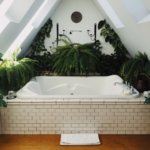 You want to look and feel your best as you snuggle with your loved one this Valentine’s Day and personal care begins in the bathroom. But, besides the kitchen, the bathroom is one of the most common places in our home often inundated with single-use items and plastic – things like shampoo bottles, q-tips, and much more…
You want to look and feel your best as you snuggle with your loved one this Valentine’s Day and personal care begins in the bathroom. But, besides the kitchen, the bathroom is one of the most common places in our home often inundated with single-use items and plastic – things like shampoo bottles, q-tips, and much more…
|
read more
In addition to reducing your waste footprint, you’ll also reduce your exposure to toxic chemicals. According to SafeCosmetics.org, “The laws governing cosmetics and personal care products are so limited that known cancer-causing chemicals are legally allowed in personal care products.” The Story of Cosmetics also provides an eye-opening look at the “minefield of chemicals” that exist in our bathrooms. Feeling motivated yet? Let’s start from the top! Your Hair Plastic shampoo and conditioner bottles are easily replaced with shampoo and conditioner bars, but you can opt to keep the plastic bottles and refill them with bulk shampoo and conditioner (found at places like The Recology Store). And there are plenty of easy DIY alternatives when it comes to hair care. Some swear by the no-poo approach and use items like apple cider vinegar and baking soda to cleanse their scalp. Others make their own hot oil treatments or hair masks with items that they already have in their kitchens. And did you know you can easily make hair gel from flax seeds or use aloe vera gel to get the same control over your curls? Your Face Moisturizers and cleansers can be purchased in bulk or replaced with natural oils. There are a surprising amount of natural products that make for great makeup: beetroot powder makes a great blush, and ground spirulina an awesome eye shadow. But if you’re not about to make your own mascara, there are thankfully many zero waste makeup brands that can do that for you. Check out the options and consider a swap the next time you run out of a product you can’t live without. And if you use disposable wipes to remove your makeup, let this be the last time. You can buy reusable pads, make them from old clothing or towels, or even crochet your own. If you shave, replace your plastic razor with one made entirely of stainless steel. The replacement blades for a safety razor average around 10 cents, and while they take some time to adjust, word on the street is that you will never go back. And if you use q-tips, consider as sustainable alternative like your pinky finger or The Last Swab – a reusable q-tip that requires only water and soap to clean before it’s ready for reuse. After numerous requests these are now in stock at The Recology Store! Your Mouth 1 billion and 400 million: that’s how many toothbrushes and toothpaste tubes are thrown away each year in the United States alone! Arm yourself with a compostable bamboo toothbrush and replace your current toothpaste with one of the myriad of toothpaste tabs or consider using plain old baking soda. And find a floss, like Dental Lace, that offers a single container and refills.(All available at The Recology Store.) Your Body Replace your body wash with bar soap or get it in bulk, along with body lotion or natural oils to moisturize your skin. Body scrubs can also be make from sugar or baking soda and oils. You can also use baking soda and water as a natural deodorant or find a deodorant that uses sustainable packaging. Your Decor Literally GREEN your bathroom! The bathroom is a great environment for plants that prefer low light and humidity. And they absorb air pollutants like mold! English ivy, dracaena, snake plants, and pothos are great options and easy to take care of, though if you have a furry friend, make sure to check the toxicity level of the plant before bringing it into the house! |
Resolutions to Help you Reduce, Reuse & Recycle More in 2020
 Washington’s waste generation has been steadily increasing since 2011. According to the Department of Ecology, Washingtonians generated 12.4 pounds of waste per person, per day in 2017! As 2019 comes to a close and we reflect on the past year and year ahead, let’s resolve to make 2020 a year of less – less waste, less plastic, and less environmental impact…
Washington’s waste generation has been steadily increasing since 2011. According to the Department of Ecology, Washingtonians generated 12.4 pounds of waste per person, per day in 2017! As 2019 comes to a close and we reflect on the past year and year ahead, let’s resolve to make 2020 a year of less – less waste, less plastic, and less environmental impact…
|
read more
Resolutions to Reduce Buy Less – One of the most impactful methods of waste reduction is simply to consume less. Americans spend $1.2 Million annually on nonessentials. Thankfully, resources abound to help you stop buying stuff you don’t need. Here are a few of our favorites: How to Stop Buying Stuff You Don’t Need & How to Program Your Mind to Stop Buying What You Don’t Need Buy Secondhand or Share – If you do find that you have a real need to acquire something, buy it secondhand. Amazing finds are ready to be discovered at your local thrift store, yard sales, or online on sites like Craigslist, Ebay, and even Facebook Marketplace. Many communities around the Puget Sound region have robust Buy Nothing groups where you can score items for free. Repair – Don’t replace it if you can fix it. And if you can’t, there’s a good chance you can find someone who can at one of King County’s free repair events. Skilled repair people or “fixers” will work on lamps, vacuums, fans, chairs, tables, tools, computers, music players, TVs, blenders, toasters, toys, pants, dresses, bags, and much more! Resolutions to Reuse B.Y.O…Everything – We are producing 300 million tons of plastic every year and 50% of that is for single use purposes. Set yourself up with a few essentials – shopping and produce bags, a water/coffee cup, and a few containers to transport leftovers – and you’ll be well on your way to making a dent in your contribution to that sobering statistic. The Recology store carries numerous products designed to replace disposable or single-use items. Buy in Bulk – Take those reusable containers to your grocery store and make a beeline to the bulk section where you’ll find pasta, grains, beans, dried fruits, nuts, nut butters and more all without plastic packaging. The EPA estimates that containers and packaging make up 30% of our total waste generation. Repurpose – You would be amazing how far a little creativity can go to help you reuse items you once thought were disposable. From cereal bag liners to toilet paper tubes, learn how you can re-imagine common household items into amazing little helpers. Resolutions to Recycle Right Do Your Research – Before you chuck something into your garbage cart, do your research. You can avoid placing electronics, appliances, batteries, paint, light bulbs and more into the landfill by taking them to places like The Recology Store. Likewise, before you chuck something into your recycling cart, do your research. Though it may be tempting to put as much as you can in your recycling cart, including things that don’t belong causes a lot more harm than good. When in doubt, check it out – give us a call, send us an email, or ask us on social media and we’ll get you an answer. If it’s not recyclable, it’s better thrown into the trash. And if it is recyclable, please make sure it’s empty, clean, and dry! |
